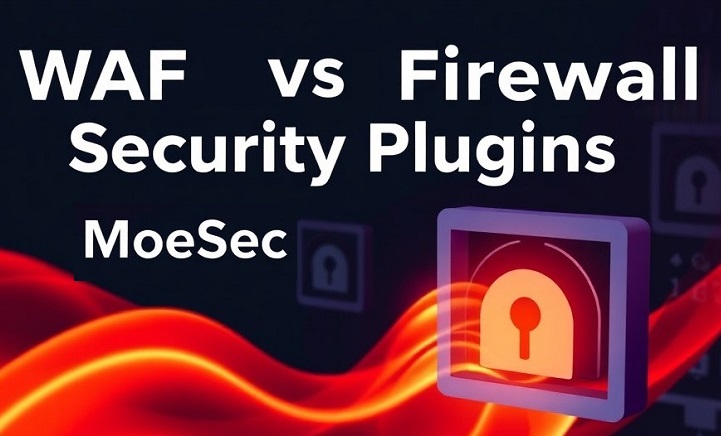Using a WAF like MoeSec.com provides several advantages over CMS security plugins. Here’s why a WAF is often more effective:
Advantages of a WAF
External Protection:
- Network-Level Security: A WAF filters traffic before it reaches your hosting server, protecting against various attacks and filtering malicious traffic before it reaches your server.
- Brute Force & DDoS Mitigation: It can absorb and mitigate Brute force(Password guessing) or Distributed Denial of Service (DDoS) attacks effectively.
Advanced Threat Detection:
- Comprehensive Analysis: WAFs use machine learning and real-time threat intelligence to detect sophisticated attacks like SQL injection and XSS.
- Zero-Day Protection: They can quickly adapt to new threats thanks to continuous updates from threat intelligence feeds, OSINT, own research and also offers Virtual Patching for new threats.
Performance Optimization:
- Resource Offloading: By handling security externally, your server resources are preserved for legitimate traffic, improving site performance.
- Resource Offloading: By handling security externally, your server resources are preserved for legitimate traffic, improving site performance.
Centralized Management:
- Unified Security Policies: Manage settings across multiple sites from a single dashboard, reducing complexity.
Limitations of CMS Security Plugins
Server Dependence:
- Resource Usage: Plugins run on your server, consuming CPU and memory resources and potentially slowing down your site.
- Vulnerability to Server Compromise: If the server is misconfigured or your CMS is vulnerable, an attacker can easily disable or bypass plugins.
Update and Compatibility Issues:
- Incomplete Updates: Security plugins may become ineffective if not updated regularly.
- Compatibility Conflicts: Plugins can conflict with other software, CMS, plugins, themes etc leading to security gaps or stop working .
Limited Scope:
- CMS-Specific: Plugins often focus only on CMS vulnerabilities, potentially overlooking broader threats.
Scenarios Highlighting WAF Superiority
Vulnerable or Outdated Website:
- If a hacker exploits a vulnerability in your CMS, plugins or themes they can disable security plugins. A WAF, operating externally, continues to protect the site and remains unaffected, continuing to filter malicious requests.
- If a hacker exploits a vulnerability in your CMS, plugins or themes they can disable security plugins. A WAF, operating externally, continues to protect the site and remains unaffected, continuing to filter malicious requests.
Failed Updates:
- Incomplete updates can leave security plugins vulnerable or non-functional. A WAF isn’t affected by your site’s internal server or software updates.
- Incomplete updates can leave security plugins vulnerable or non-functional. A WAF isn’t affected by your site’s internal server or software updates.
Technical Glitches:
- Internal conflicts or errors can disable security plugins, but a WAF remains operational, ensuring continuous protection.
Example Scenario
Imagine a WordPress site using a firewall security plugin. An attacker exploits a CMS vulnerability to gain admin access, disabling the security plugin. This leaves the site open to further attacks. With a WAF, even if the internal security is compromised, the external layer remains active, blocking harmful traffic and protecting sensitive data.
Another Scenario
Conclusion
For robust security, especially in high-risk environments, a WAF like MoeSec offers an additional layer of defense that mitigates risks associated with CMS security plugins. It provides broader protection, better performance, and remains effective even if internal systems are compromised.



